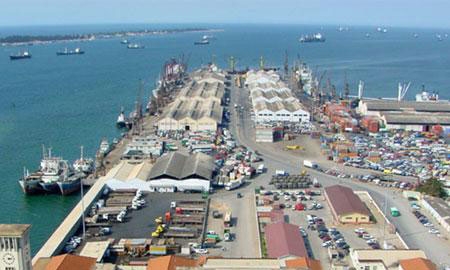What can you tell us about the importance of the port of Luanda to Angola?I was only recently appointed to occupy the chief executive officer’s post in the port of Luanda, or PL. The port has a very special significance for our domestic economy because more than 80% of imported goods and commodities are brought into the country through PL.
Angola not only is in need of essential goods for internal consumption, it also has to deal with many activities related to the country’s reconstruction process.
How is the port adapting to importers’ and exporters’ needs?It has to be ready for the challenges of today and of tomorrow, and it has to guarantee trade routes connecting the country with the different markets in the world and at the same time meet the demand of other specific routes.
In PL there are several terminals differentiated by area of expertise, including one of major importance that is used to support the oil industry. It’s used to load and offload different kinds of materials and equipment to and from the oilrigs, and at the same time the terminal receives some oil-derived products for the development of our economy.
‘MORE THAN 80% OF IMPORTED GOODS AND COMMODITIES ARE BROUGHT INTO THE COUNTRY THROUGH LUANDA’
|
How did the port eliminate the congestion that was causing long waiting periods for ships?The key aspects that helped change the overall picture were organizational, infrastructural and managerial. All these, together with the arrival of lots of vessels almost at the same time, were critical because the port’s layout did not allow the clearance of many vessels at the same time.
A lot of hard work was needed to find a solution to the problems of not only the port, but of all the sectors that constitute the port community. The port itself, the operators and other partners mobilized to participate in that huge effort.
We opened other transfer areas to store the containers – second line terminals, which are part-owned by some of the operators of our terminal including Sogester, and Multiterminais. The dry port of Luanda, which at the moment is managed by Multiterminais also played a major role in the decrease of vessels’ waiting times.
How much will be spent on the port’s modernization plan, and how much has already been finished? The modernization program will be part of a later phase of the overall plan. The current investments are going toward reconstruction efforts. You need to separate the three stages: first there’s the reconstruction of the structure, then the construction of the pavements, the quay, and the navigation safety systems, then the improvements in general and only after all that will the modernization phase begin.
Each one of the phases was negotiated with all operators of the terminals. The investment portfolio will be shared among each one of the operators in accordance with their consignment agreement.
The whole investment program will cost close to $350 million, including all quays and all terminals.
How does the port link up with the rest of the country’s transport infrastructure?The design of our railway systems integrated the ports into the network right from the beginning. PL is less than 100 yards from the train station, with the railway that goes to upcountry locations. Lobito’s railways work for the Port of Lobito and the same can be said of the Port of Namibe, which also has its railways - Moçamedes Railways.
How do the port and the customs service cooperate to improve transit times?The statistics show significant improvements in the past few years. Customs has a very direct connection with us. Although we manage the port, goods are under their supervision. We own the terminal; the customs agents inspect and take care of the customs duties on behalf of the Angolan government.
A lot still has to be done to make customs procedures easier and faster. With that in mind, we plan to set up what we call a single service counter, where all the parts that make up the port’s activities are centered.

0 COMMENTS